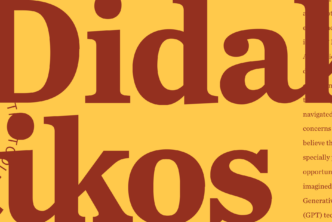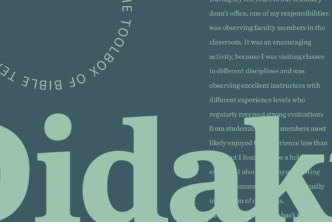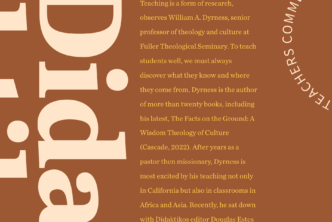
by Hans Madueme | Covenant College
Extraterrestrial life is standard fare in science-fiction literature. Michel Faber’s The Book of Strange New Things is a fine example, a tale about a Christian missionary who journeys to another planet in order to evangelize an alien species.1 The Three-Body trilogy by Cixin Liu is an even better example of intergalactic drama; it is remarkably good Chinese storytelling than which none greater can be conceived.2 Beyond fiction, the Search for Extra Terrestrial Intelligence (SETI) has programs funded by NASA, public universities, and private donors. As astronomers discover thousands of “exoplanets”—planets that orbit a sun beyond our solar system—the cultural plausibility of alien life is strong. But whether such speculations have any theological plausibility is a different question entirely.
Astrobiologists study the origin, nature, and future of life in the universe, drawing on astronomy, physics, biology, chemistry, ecology, and many other disciplines.3 The subfield of astrotheology reflects theologically on astrobiology; it is “the branch of theology that provides a critical analysis of the contemporary space sciences combined with an explication of classic doctrines such as creation and Christology for the purpose of constructing a comprehensive and meaningful understanding of our human situation within an astonishingly immense cosmos.”4 I happen to be skeptical that there is any extraterrestrial life, but astrotheology is still valuable regardless of where you stand on that question. Strangely enough, revisiting old theological questions with an eye to (possible) extraterrestrial life actually clarifies and deepens our understanding of those areas of the received tradition.
In the history of Christian thought, astrotheological musings are not new.5 Ancient pre-Christian authors like Leucippus, Democritus, and Epicurus speculated on the existence of life in other universes—as did Plato and Aristotle. Many patristic and medieval authors had something to say (usually critical) about the possibility of life on other worlds. But after Nicholas Copernicus published his work defending heliocentrism in 1543, Christians were far more likely to endorse extraterrestrial life. If just a fraction of the myriad stars have planets like ours, people reasoned, then space is a vast metropolis teeming with alien beings. By the eighteenth and nineteenth centuries, all kinds of religious thinkers believed that the God of Abraham, Isaac, and Jacob seeded alien life throughout the cosmos. Of course, there were always skeptics like Galileo, Descartes, Kepler—but belief in extraterrestrials was the dominant position prior to the mid-nineteenth century, represented by Christian thinkers like Timothy Dwight, Thomas Dick, and Thomas Chalmers (even Kant addressed the possibility multiple times).
[callout img=”https://files.logoscdn.com/v1/files/10409120/content.jpg?signature=nFx4kTe4daL1a2lQGneAp2uTohI” text=”Hans Madueme’s Reading Christian Theology in the Protestant Tradition is” link_url=”https://www.logos.com/product/153939/reading-christian-theology-in-the-protestant-tradition” link_text=”currently available on pre-pub.”]
Real or hypothetical, such a position invites robust Christological reflection. On one set of intuitions, the very idea of God’s becoming incarnate on this particular planet is unimaginably preposterous. Assuming the truth of extraterrestrial life—and such life abundantly—the Bible’s scandal of historical particularity seems geocentric or, worse, anthropocentric. At the same time, others argue for multiple incarnations according to which every planet with intelligent life experiences a divine incarnation; after all, Jesus is the Cosmic Christ. In a more traditional understanding, if any alien species needs redemption, then Calvary is enough. One incarnation is sufficient for the entire cosmos.
These do not exhaust all possibilities, but they signal deeper questions about the nature of Christ’s incarnation. Why was incarnation necessary? Would the incarnation have happened with or without the entrance of sin (so-called “incarnation anyway”)? Does redemption extend to the cosmos as fallen, or should we also include sinners from other worlds? Such questions in the emerging subfield of astrochristology illuminate the inner logic of Christian theology.6
A rising generation of Christians who aspire to work at NASA and in other engineering fields are looking for help. Some of them, especially college students, struggle with doubt and the possibility of losing their faith if we were to discover life on other planets. They worry that the doctrines of creation and incarnation would unravel if SETI eventually succeeds. Quite apart from any academic interest, then, astrotheology has additional pastoral and apologetic relevance for a new generation. Even if we jettison any notion of extraterrestrial intelligence, astrotheology exposes the vastness of the galaxy and its countless stars. Creative artistry may be one of the most underexplored aspects of divine glory. The breathtaking extravagance of creation is on full display, enriching our knowledge of God and inciting rapturous doxology. Gloria in excelsis!7

This article first appeared in Didaktikos, the Journal of Theological Education. Didaktikos is a professor-to-professor journal that covers important advances in theological education in a user-friendly format. Subscriptions to Didaktikos are free for educators in theological education, who will also receive a 20% discount on Logos Bible Software. Go here to find out more.
- Michel Faber, The Book of Strange New Things (New York: Hogarth, 2014).
- The first of the three volumes is Cixin Liu, The Three-Body Problem, trans. Ken Liu (New York: Tor Books, 2014).
- E.g., see Charles Cockell, Astrobiology: Understanding Life in the Universe (Oxford: John Wiley & Sons, 2015).
- As usual, the Lutheran theologian Ted Peters is ahead of the curve and has offered some of the most insightful surveys of astrotheology. The quote, italicized in the original, is from his “Astrotheology: A Constructive Proposal,” Zygon 49.2 (2014): 446. He has several essays that probe this new field.
- For this paragraph, I am drawing on Michael Crowe, “A History of the Extraterrestrial Life Debate,” Zygon 32.2 (1997): 147–62. See also his important monograph, The Extraterrestrial Life Debate: Antiquity to 1915 (Notre Dame: University of Notre Dame Press, 2008).
- I have been helped by Ted Peters, “Astrobiology and Astrochristology,” Zygon 51.2 (2016): 480–96.
- For ideas along these lines, see David Wilkinson, Science, Religion, and the Search for Extraterrestrial Intelligence (Oxford: Oxford University Press, 2013), 135–37. For more on astrotheology, see the last five chapters of Andreas Losch, ed., What is Life? On Earth and Beyond (Cambridge: Cambridge University Press, 2017).





